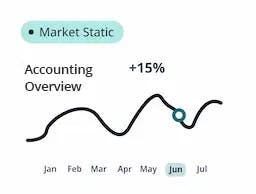
Alex
2025-07-30

When a substantial portion of your company&pos;s budget is allocated to physical assets, it becomes crucial to optimize their lifecycle and ensure their full potential is realized. This is where enterprise asset management (EAM) proves invaluable, providing a structured framework for asset utilization, procurement, and maintenance. Enterprise asset management software enhances the value of these practices by digitizing the asset-tracking process.
Contact us?
Within the market, various options await those seeking EAM software. The pivotal decision revolves around the implementation approach for this software. Should it be a distinct standalone application, or should it seamlessly integrate with your ERP system? This article delves into a comprehensive exploration of different enterprise asset management software solutions and dissects which option can enhance your business.
What is Enterprise Asset Management
Enterprise Asset Management (EAM) comprises a series of practices designed to ensure asset reliability and optimize operational performance. This practice significantly emphasizes asset lifecycle management, empowering better control over asset health.
EAM plays a pivotal role for enterprises managing an extensive array of complex and high-value physical assets, including vehicles, heavy machinery, buildings, and more. Its significance is particularly pronounced in manufacturing, construction, energy, space, defense, etc. The absence of robust asset management within these sectors often leads to elevated costs associated with asset support and maintenance processes while injecting disorder into operational activities.
What is the ERP Software
ERP or enterprise resource planning, is a strong tool for organizations to manage their daily business operations efficiently. With a primary focus on business growth and leveraging data to enhance outcomes, most ERP solutions offer integration capabilities. This comprehensive system finds application in diverse areas, including accounting, purchase order management, and supply chain management.
ERP unifies diverse business processes, harnessing data from multiple sources for streamlined operations. Through seamless integration, ERP applications facilitate the seamless flow of information across processes. By consolidating an organization's essential data from different origins, ERP effectively eliminates duplication while ensuring data integrity with pinpoint accuracy.
The significance of ERP software extends to financial analytics by leveraging data for budget planning and generating insightful reports to predict financial outcomes. In the current tech-centric landscape, businesses heavily rely on ERP systems, driving the remarkable growth of the ERP market. As per the Fortune Business Insights, the Enterprise Resource Planning (ERP) software market is expected globally to surge from $49.28 billion in 2022 to an impressive $90.63 billion by 2029, boasting a robust CAGR (Compound Annual Growth Rate) of 9.1%.
Asset Lifecycle Management
As previously indicated, the asset lifecycle serves as the foundational framework for enterprises to structure their asset management practices. This lifecycle contains several distinct stages.
Planning
Undoubtedly, the initial and pivotal stage involves crafting the blueprint for effective asset utilization. This phase involves meticulous analysis of existing asset gaps, delineating requisite asset specifications, and seamlessly integrating new assets with the existing inventory.
This step warrants ample attention, as it lays the foundation for a well-defined project vision. It presents an opportune moment to explore emerging technologies (such as digital twins, which have gained prominence in recent years) and embark on a digital transformation journey for your business. Key components include comprehensive needs assessment, performance evaluation, and business process optimization. Equally vital is the consideration of crucial organizational elements, including budgetary considerations.
Acquiring
After finalizing the plan, the next steps involve procuring and transporting assets to their operational site. This phase involves an array of activities:
Management of contracts, quality assurance inspections, asset storage, spare part inventory management, and related endeavors.
Deployment
At this juncture, the focus shifts to assembling, installing, and conducting preliminary evaluations of the acquired assets. Success in this stage hinges on meticulous attention to aspects such as asset tracking, ownership validation, comprehensive documentation, requisite qualifications, future maintenance strategies, and robust support frameworks.
Operation
Extending over the longest duration, this stage witnesses assets generating returns on investments. For individuals seeking amplified revenue streams, the role of enterprise asset management becomes paramount. During this phase, EAM software orchestrates both scheduled and unplanned work activities. Additionally, the EAM system assumes the pivotal responsibility of monitoring asset health, thereby accumulating substantial data to facilitate strategic maintenance planning, preempt untimely failures, and optimize asset longevity.
Maintenance
Asset maintenance is an inevitability, yet its management and the implementation of effective maintenance strategies can optimize operations, reduce downtime, and mitigate disruptions within the manufacturing cycle.
Asset maintenance can be classified into two primary types: planned and unplanned.
Planned maintenance follows a predefined schedule and is preventive in nature. Conversely, unplanned maintenance arises in response to equipment breakdowns or suboptimal performance. This form of maintenance can lead to unscheduled downtime, adversely impacting enterprise productivity and profitability.
Given these implications, a prudent approach involves prioritizing planned maintenance or even embracing high-tech engineering such as the Industrial Internet of Things (IIoT) and artificial intelligence (AI). These innovations enable predictive maintenance, augment monitoring, and provide real-time asset data.
Disposal
The culmination of an asset's lifecycle prompts the need for disposal, presenting an opportunity for companies to extract value from the experience rather than merely writing it off.
Assets are typically disposed of for several reasons:
- The asset has reached the end of its operational lifespan, rendering it unusable.
- The asset no longer aligns with the company's evolving needs and requirements.
- The cost of maintaining the asset becomes prohibitive.
- The asset can be upgraded with more contemporary technologies.
To maximize this stage, companies should undertake two pivotal actions: analyze data pertaining to asset lifespan (with assistance from EAM software) and assess the potential value derived from asset disposal.
EAM Practice vs. EAM Software
Enterprise Asset Management (EAM) encompasses a collection of methodologies aimed at overseeing assets, enhancing their efficiency and longevity while concurrently curbing support costs and elevating their overall quality.
In contrast, EAM software serves as a tool to facilitate asset management, offering guidance throughout the lifecycle of each asset.
The Integration Advantage: Incorporating EAM Solution into Your ERP System
For industries like plants, manufacturing, and supply chain management, enterprise asset management (EAM) software is indispensable. As mentioned earlier, this type of solution is pivotal in optimizing asset management, maintaining operational assets, implementing preventive maintenance strategies, and ultimately enhancing overall asset performance.
A significant question arises: should enterprises opt for a standalone enterprise asset management software or integrate an EAM solution seamlessly within their ERP application as a module? Our recommendation leans towards the latter. Integrating EAM with ERP offers superior collaboration and data coherence compared to using these two software pieces independently.
Here are the key advantages that the integration of EAM with ERP brings forth:
- Eliminating data duplication and centralization of data within the asset management department and across other departments.
- Streamlined processes, fostering enhanced collaboration throughout the enterprise, mitigating miscommunication, task bottlenecks, and delays.
- Deeper financial insights, as the EAM solution provides a comprehensive understanding of asset costs, while ERP handles financial aspects like costs, depreciation, and capitalization holistically across your organization.
- Streamlined and cost-effective IT support focuses IT resources on a single system, avoiding dispersion across multiple platforms.
- Smoother adoption by your team, as employees only need to master one system. Thus, it simplifies the psychological transition and reducing time lost in navigating between interfaces.
Incorporating EAM into your ERP system is a strategic move that ensures enhanced efficiency, reduced complexities, and a unified approach to asset management and enterprise operations.
The last thoughts
Both applications hold their respective significance. Asset management software is specialized in the tracking and lifecycle management of assets, while Enterprise Asset Management (EAM) software is tailored for data management, purchase order (PO) management, and accounting and finance management. However, it's worth noting that Elate's asset management ERP software can accomplish PO management and data management functionalities.
Moreover, the asset management software boasts numerous additional features that provide it with a competitive advantage. Furthermore, this software proves valuable for organizations of all sizes and across various industries, given that every sector relies on assets. On the other hand, EAM is more suitable for sizable organizations with specific requirements. Asset management software, in contrast, is versatile and adaptable to all organizational types, offering the potential to enhance asset efficiency and overall organizational performance.
Elate ERP stands as a comprehensive ERP system designed for companies of all sizes. We successfully delivered the application within a span of 6 months, encompassing crucial aspects of clients' production cycles. It also introduced automation in data management processes.
Latest News
From Our blog and Event fanpage




